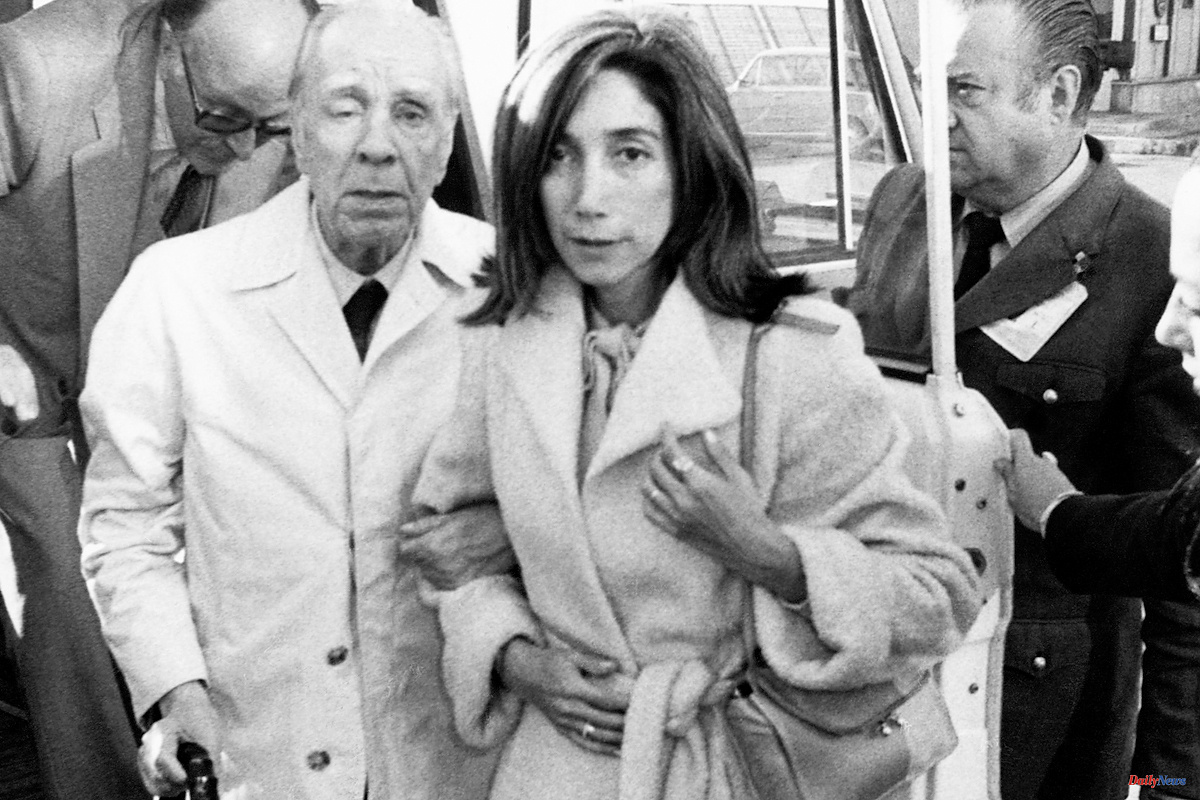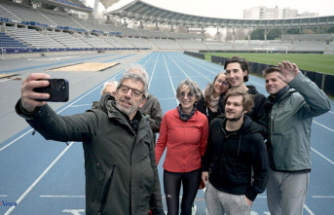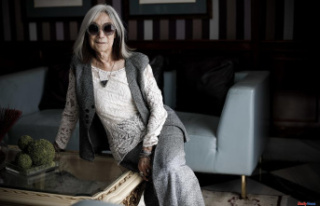To the surprise of the respectable, Jorge Luis Borges and María Kodama were married on April 26, 1986 in Geneva (Switzerland). They did it by proxy before the Paraguayan Justice and Borges declared her the universal heir of her, in a fact not without controversy, since her detractors accused her of having forced him to do so. Malice is like that. He was 87 years old. Ella, 48. Ella Always treated her like you.
Months later, the Argentine writer died in the city that he designated as one of his homelands. It was not the first marriage of the author of El Aleph. Borges had married Elsa Astete Milán in September 1967, at the age of 68. That lasted 36 months, by unilateral decision of the writer. So it was Kodama, in truth, who stayed closest and stayed with Borges for the longest time, who read in his ear the most. Who knew him better? Who was well aware of the dominant condition of the genius's mother, Leonor Acevedo Suárez, who kept Borges in her womb until she left this dog world at the turn of the century; and she was the one he dictated the most when blindness passed from metaphor to reality.
Maria Kodama was born in Buenos Aires. She is the daughter of María Antonia Schweizer, of Swiss-German, English and Spanish descent, and the Japanese chemist Yosaburo Kodama. Her birth certificate marks the year 37 of the last century. The marriage certificate contains a coquetry in this sense: she establishes her first wailing in 41. The first time they saw each other (although Borges was already gaining darkness in his eyes) was in 1953, in a bookstore on Florida street in Buenos Aires. Aires. She was 16 years old, he was 54. She told him that she was going to study Literature and he invited her to study Old English together.
Some time later, Kodama graduated in literature and enrolled in a course taught by the writer. And since then they stayed together for everything, also in some exploits of an expeditionary nature. They studied Icelandic, traveled halfway around the world, visited the most remote zoos, had their portraits taken with tigers. Borges had left behind his dark condition as a librarian, and the darkest humiliation of being sentenced to work as a bird inspector in markets by the work and grace of Perón. When he takes flight with his young companion, he already had an odd god base.
María Kodama was the pole to fully live the designs of that destiny crossed between a vast culture, a mythical end of man and that penultimate certainty that tormented the poet Borges, and that he encrypted in these verses: "I have committed the worst of sins / that a man can commit. I have not been/happy". Since the writer's death, she Kodama served as a sentinel alert to any matter that occurred related to her husband. She surrounded herself with lawyers, with an unbreakable clan of friends. There was no Borgeian role that she did not know, that she did not control. She became the demon of unscrupulous editors. And also in the guillotine of the most patient. She proposed that Borges not be stuffed with oblivion. And she got it. Not just because readers are loyal to this man, but because she has handled the play as if there were never a goal.
He shielded the legacy of the author of Fictions through the foundation he created in 1988, where part of the library, manuscripts, and personal artifacts of the author of 'Funes, the memoirist' are exhibited. "People tell me that my biggest job is to make people feel that they are alive and that has been my job for 30 years. That is, it is to give your life for something, and you give your life only for something that you love madly; if not, you don't do it. Because I love him madly, if not, I wouldn't do it," he explained.
Along with Borges, he translated some works such as Atlas and Brief Anglo-Saxon Anthology. He wrote a book of stories titled, explicitly, Stories. And in 2016 his Tribute to Borges, where he says: "Our renowned relationship went through different facets over time until it culminated in the love that inhabited us (...) That love of which he left traces throughout his books without telling me, until he revealed it to me".
Almost every year he went around the world to test how the fervor for Borges was going. And if she detected a drop in admiration pulses and the rising value of her husband's publishing stock, she would invent some strategy to put him back at the top of attention, accumulating enemies along the way and showing the occasional adversary head. on a pike
Among his many diatribes, that of opposing the creation of a Borges Museum in Buenos Aires is one of the best fought. On December 4, 2019, he officially rejected the proposal of the then president of Argentina, Alberto Fernández. The museum would have, among other merchandise, a set of manuscripts donated by the businessman Alejandro Roemmers. Kodama maintained that part of that material had been stolen from the writer's house by a domestic employee and put the cauldron of controversy back on the fire.
He was clear about the role of executor, as he also maintained until the end of Borges's life a delicate attitude of a bodyguard who never raised his fist or voice, but knew how to keep everyone who came close at bay. "The best teaching that Borges has left me is to enjoy life, that life is wonderful. We traveled a lot, we studied many languages...Everything was very fun, we had a great time. Life was a game with him", He said. Cancer finished first with the brilliant writer and now with her. A breast cancer in his case. A disease that, like Borges, he had confessed to very few, perhaps almost no one, because when the disease does not announce itself, it does not require responding to compliments, or enduring premature pity.
According to the criteria of The Trust Project












